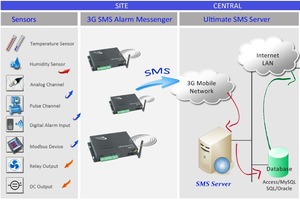Introduction to GSM Controller
The GSM controller is an advanced device that facilitates seamless communication between GSM networks and various applications including home automation, industrial monitoring, and remote control systems. By leveraging GSM technology, it enables users to operate devices and systems via SMS commands or voice calls from anywhere in the world. This level of convenience and efficiency makes the GSM controller an essential component in modern electronic solutions.
Types of GSM Controllers
Understanding the different types of GSM controllers can help you choose the right one for your needs. Here are some common types:
- GSM Relay Module: Used for switching appliances on and off remotely.
- GSM SMS Controller: Designed specifically for sending and receiving SMS messages for automation purposes.
- GSM Modem: Offers more extensive communication capabilities, often used for data transmission.
- Embedded GSM Controller: Integrated into various devices for real-time control and monitoring.
Applications of GSM Controllers
The versatility of GSM controllers allows for a wide range of applications across various industries:
- Home Automation: Control home appliances and security systems remotely.
- Agriculture: Monitor environmental factors and control irrigation systems.
- Industrial Automation: Automate factory operations and monitor equipment health.
- Fleet Management: Track and manage vehicles in real-time.
- Security Systems: Enable remote monitoring and alarm systems.
Features and Advantages of GSM Controllers
GSM controllers come with an array of features that enhance their usability and efficiency. Here are some notable characteristics and advantages:
- Remote Control: Operate devices from any location using a mobile phone.
- User-Friendly Interface: Simple SMS commands make the system easy to use for anyone.
- Cost-Effective: Reduced need for wiring and infrastructure decreases installation costs.
- Real-Time Monitoring: Get instant alerts and updates on system status directly to your phone.
- Multiple Device Control: Manage and integrate multiple devices simultaneously through a single controller.
- Energy Efficiency: Optimize power usage by remotely controlling systems, reducing waste.





















































































































































































